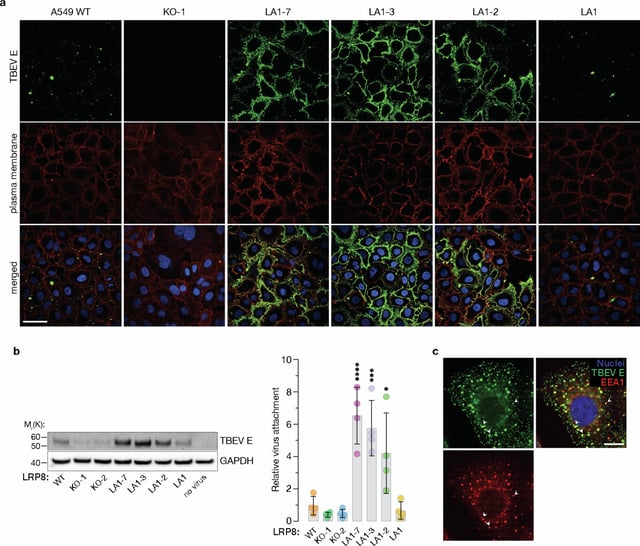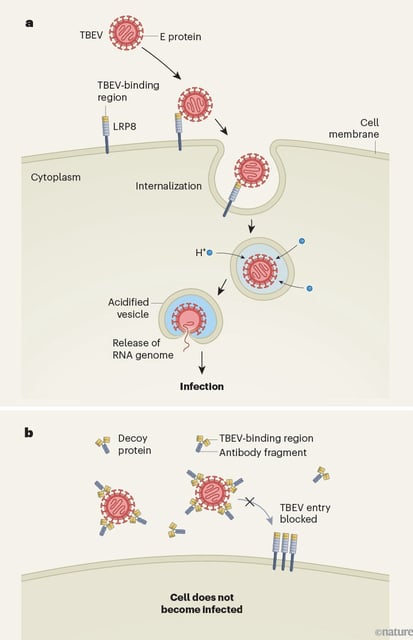Overview
- A genome-scale loss-of-function screen revealed that cells surviving TBEV exposure lacked the gene encoding the surface protein LRP8.
- Follow-up experiments showed the virus’s envelope E protein binds LRP8, enabling attachment and entry with pronounced effects in neurons where LRP8 is highly expressed.
- Knocking out LRP8 rendered cells resistant to infection in vitro, identifying a cellular gateway that helps explain TBEV neuroinvasion.
- Researchers note the absence of specific treatments for TBE and propose the LRP8–E interaction as a potential target for entry-blocking drugs.
- The authors describe this as the first identification of a single essential flavivirus receptor, a claim that they say warrants corroboration in neuronal systems and animal studies.


